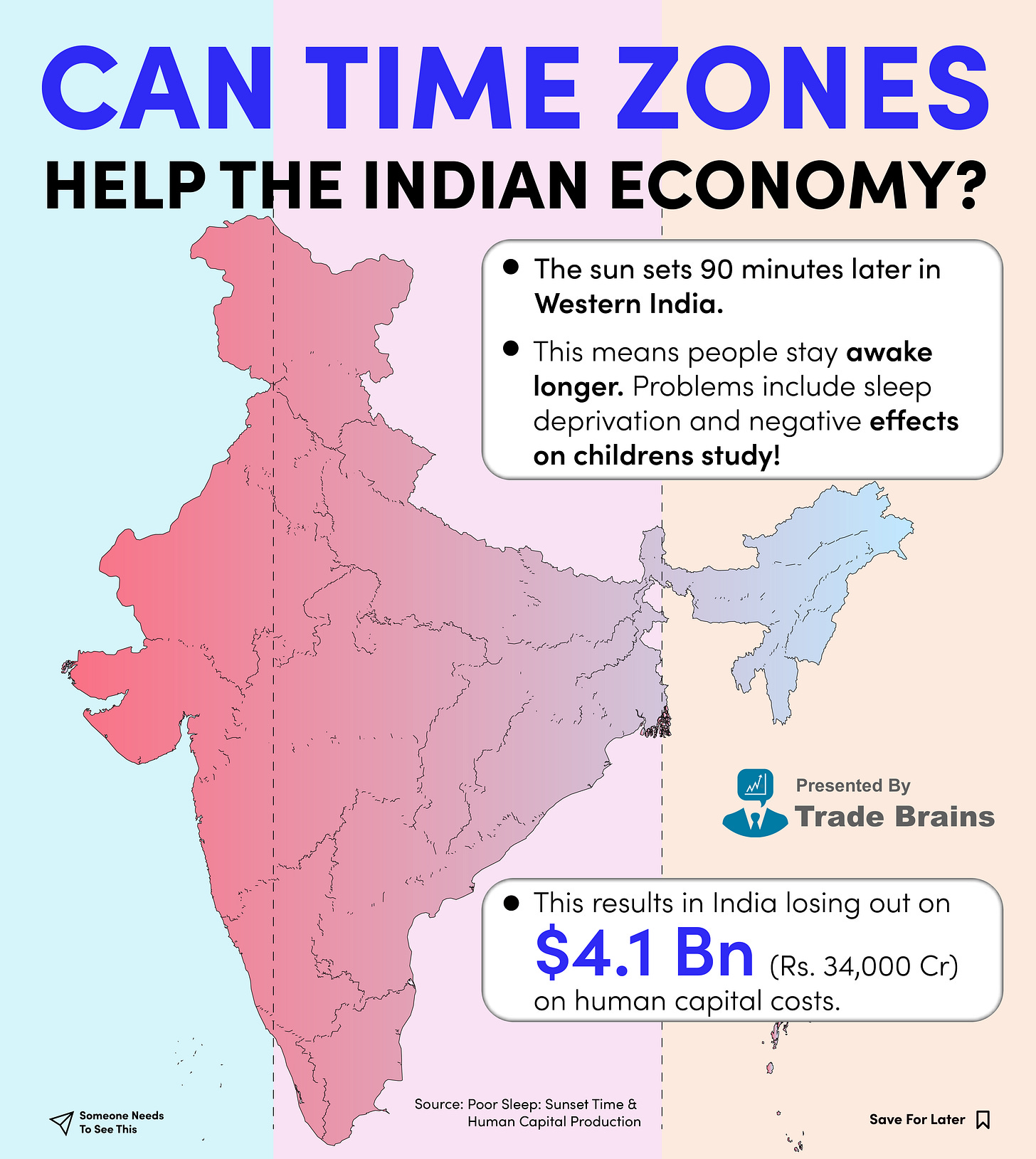Can Having Multiple 'Time Zones' help the Indian Economy?
Many countries like the United States, Brazil, Canada, Russia, Australia, Mexico, etc have multiple time zones to increase the productivity & efficiency.
Before Independence, India had two typical time zones -- Bombay Time and Calcutta Time, along with Madras time which was also used widely by the railways in India.
The sunrise to sunset time today in Itanagar, Arunachal Pradesh is 4:45 AM to 5:58 PM. On the other hand, the sunrise to sunset time today in Gandhinagar, Gujarat is 6:15 AM to 7:16 PM. A sunset time difference of one and half hours between these two capitals.
🌅 Conventionally, each time zone is separated by 15 degrees longitude, dividing countries worldwide into 24 different time zones.
There is a 30-degree longitudinal difference between Arunachal Pradesh in the east and Gujarat in the west of India. This qualifies for a twin time-zones setup.
But when policies were made for independent India, the government decided to go with a single time zone, at longitude 82.5º east and 5.5 hours ahead of Greenwich Mean Time (GMT)
A lot of countries like the United States, Brazil, Canada, Russia, Australia, Mexico, etc have multiple time zones.
Over 70 countries also have daylight saving time, which sets the clock one hour ahead in the summer and one hour behind in the winter. This is done to make better use of daylight.
A later sunset means people stay awake longer, work and study longer and in turn causes sleep deprivation, according to the study ‘Poor Sleep: Sunset Time and Human Capital Production’ by Maulik Jagnani, Cornell University.
Can having multiple time zones help the Indian Economy?
What's your view on this? Do comment below!
********
Want to stay updated with the latest financial updates and news? Follow Trade Brains & FinGrad!


